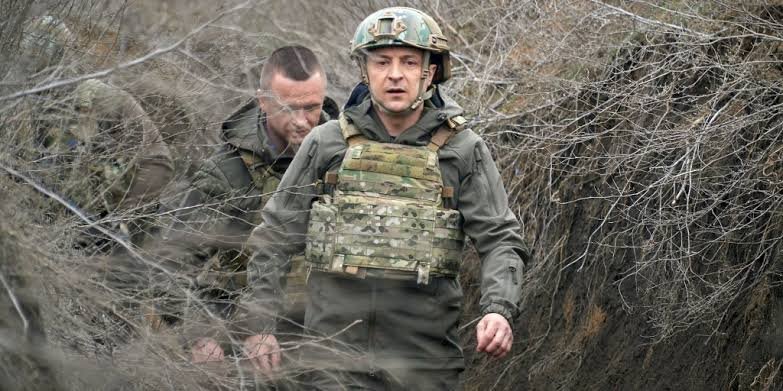
Know Your Enemy” is a standard invocation in wartime. But, if clear-eyed appreciation of an opponent and his intentions is obviously necessary, shouldn’t “Know Your Ally” be equally imperative?
Even when war has become a spectator sport for Westerners, rejoicing in killing Putin with their mouths in cyberspace and joyously kicking Russian cripples out of the paralympics, there is a real conflict going on which is horrendous for Ukrainians, which also has serious implications even for us off-shore islanders, as well as Europe as a whole.
Romanticising our chosen side and vilifying their foes are natural reactions, but fairy-tale versions of conflict often disguise the flaws of the allies even if they pale by comparison with the vices of the invader.
Think how in 1914 “Plucky Little Belgium” was portrayed as a damsel in distress about to be raped by a literally monstrous Hun. But until August, 1914, Belgium’s place on the scale of victimhood was decidedly at the perpetrator end. The horrific exploitation of the Belgian Congo’s population as slaves to King Leopold’s greed — fictionalised by Conrad’s “Heart of Darkness” — had been exposed by Sir Roger Casement and E.D. Morel, who both rejected the defence of Belgium.
Casement went over the top to side openly — and suicidally with Imperial Germany — while Morel went to prison for urging men not to join up. They were deeply mistaken about Germany, but they did know something about our Belgian ally’s moral record.
Wartime Polish resistance to the Nazis and service in the RAF is fondly remembered in this country and rightly so, but the Polish junta in 1939 was as militarily incompetent as their Argentinian counterparts in 1982. The courage of ordinary Polish soldiers should not make people forget the regime which had colluded with Hitler against the Czechs in 1938. Our other ally, Stalin, subsequently “liberated” the Poles in his inimitable way. The trade-offs and alliances that defeated the Nazis were extremely ugly.
Turning to Ukraine today, it is easy — and heart-warming — to get swept away by the pictures of Ukrainian soldiers fight back against the vast Russian army or civilians blocking the path of the “Russian steamroller” (so admired in 1914 by the British public). President Zelensky is by far the best president Ukrainians have had since independence in 1991. That might seem a back-handed compliment when we consider how low his predecessors set the bar. But the focus in Western media on this real life Charlie Chaplin defying the Kremlin’s “Great Dictator” makes good “reality tv” but overlooks the actual power-structures in Ukraine.
President Zelensky is an excellent propagandist for his country’s cause, but can he win the peace any more than Churchill?
Let’s allow that Ukraine fends off the Russian onslaught against all odds; don’t assume it will be a better place for ordinary people or even a more comfortable neighbour for the West.
Nothing justifies Putin’ aggression, but one reason why he thought that the country would collapse overnight was the deeply-flawed system which had emerged since 1991. Although Western leaders refer to it as enjoying thirty years of democracy, in reality election fraud has bedevilled Ukraine. Remember the mass demonstrations in 2004 which were supposed to herald the birth of good governance with an “Orange Revolution”. That episode and its heroic leaders have gone down the Western media’s memory hole. The “good oligarch”, President Poroshenko was elected in the aftermath of the 2014 mass uprising endorsed by the West, only to be humiliated in 2019 by a comedy actor.
This recurrent instability reflects the terrible immiseration of Ukrainians since 1991, when they weren’t rich to begin with. The ordinary population has been bewildered by a series of economic crises which nonetheless have seen an oligarch class get phenomenally richer by taking over natural resources and embezzling IMF loans and Western aid.
Read the rest here.

